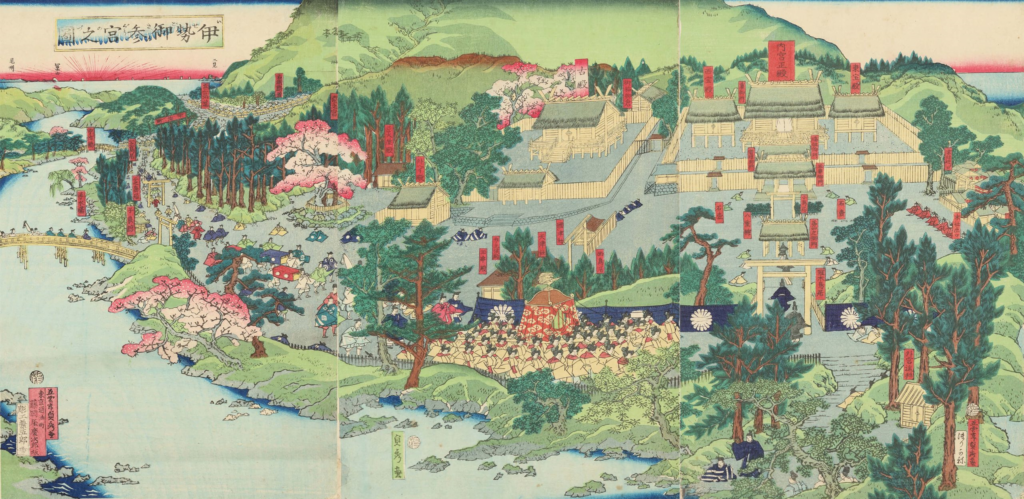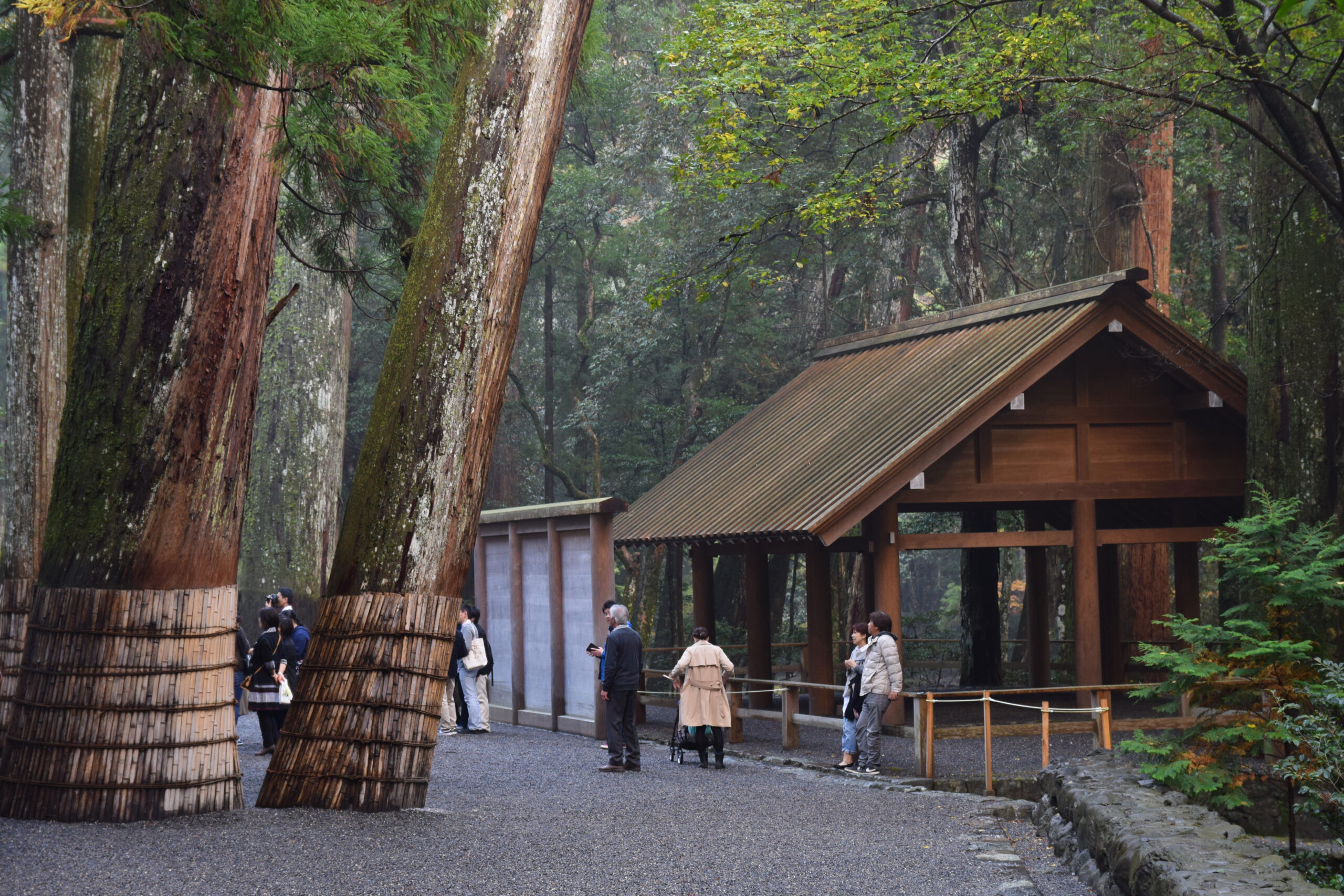
Every 20 years the citizens surrounding the Ise Shrine gather to rebuild the inner shrine. This ancient tradition dates back two thousand years. Locals of this Japanese town take part in transporting wood, building walls and bridges, and thatching roofs. The tradition serves to not only upkeep the Shrine but to also keep traditional trades alive in younger generations.
While it is unusual to deconstruct entire buildings, the preservation philosophy is different in Japan than the U.S. or other western countries. Sections of historic structures may be replaced with a modern aesthetics consistent with the values or ideas that the building represents. the Hotel Okura – built in 1962 to celebrate the hosting of the Olympics and the future of Japan. Sixty years later, as the ideas and hopes for the future of Japan have changed, the buildings representing those ideas have also changd. Other times, buildings may have sections removed and rebuilt as a method to maintain aesthetics and safety.
Japan is frequently subjected to natural disasters such as earthquakes or tsunamis. Their preservation philosophy is guided by the material impermanence of structures, prioritizing instead trades techniques to create physical cultural heritage. Many historic structures in Japan are not actually that old, having been rebuilt through the same methodology. So even when the original building may not survive, the methods, traditions, and ideas that went into it are well and alive.

The last time citizens of Ise gathered was 2013, with preparations for the rebuild starting all the way back in 2005. There are multiple festivals per year to celebrate every step along the way, keeping locals in touch with cultural and spiritual traditions along with familiarizing them with ancient building techniques. Trees are carefully selected, felled, and transported using the same guidelines would have been used when the temple was first built.
Content for this blog was researched and written by Eva Parry, Americorp Vista Member for The Campaign for Historic Trades
Citations
https://www.britannica.com/topic/Ise-Shrine
https://www.getty.edu/conservation/publications_resources/pdf_publications/pdf/chiangmaiconf.pdf
